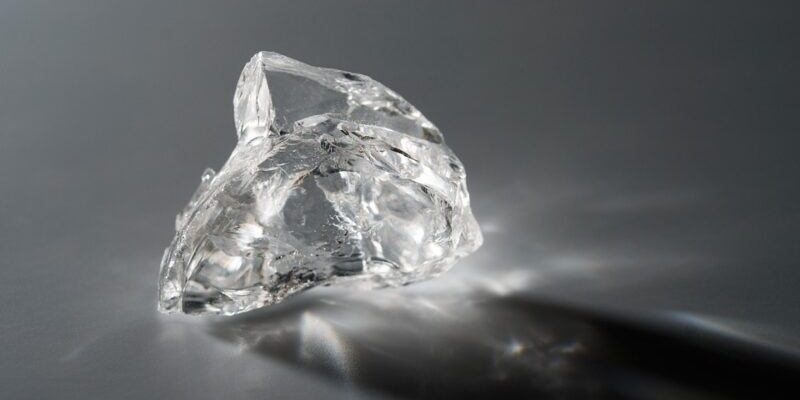New sanctions on Russia will fast-track the adoption of traceability programs across the supply chain. Should they wish to sell those diamonds into the Group of Seven (G7) countries, companies will have to prove their goods were sourced from non-Russian production.
On December 6, the G7 — comprising Canada, France, Germany, Italy, Japan, the United Kingdom, and the United States — announced its latest sanctions, aimed at “limiting Russia’s ability to fund its illegal war,” the joint statement read.
Diamonds featured prominently in this round of measures, perhaps because the group had delayed a policy decision on how to handle Russia’s diamond supply until then — nearly two years after the war in Ukraine began on February 24, 2022.
Initial sanctions targeted Russia’s oil and gas industry as well as restricting its banking system and the transfer of funds, while touching on diamonds in an ambiguous way.
Still, diamonds contribute to Russia’s government revenue and therefore to the war effort, causing the sector to be entangled in the sanctions discussion.
The Russian Federation owns a 33% stake in mining company Alrosa, the world’s largest producer of rough diamonds by volume. The company generated rough sales of $4 billion from 45.5 million carats in 2021, the last prewar publication of its earnings.
“The goal of this effort remains centered on reducing revenue that Russia earns from diamonds, which fuels Moscow’s war machine against Ukraine,” the European Commission (EC) stressed in a separate statement, which provided additional details about the sanctions.
Sanctions in place
The sanctions will replace existing measures some countries implemented earlier.
The US banned imports of diamonds from Russia in March 2022, but left a loophole allowing for polished stones transformed from Russian rough in third countries.
The European Union delayed implementing any restrictions out of concern such measures would place Belgium at a disadvantage in its competition with Dubai — as well as Mumbai and Tel Aviv — for market share as the premier rough-trading center.
The United Arab Emirates (UAE), India and Israel have not implemented any restrictions on Russian-origin diamonds, though they export goods to those countries with a ban in place.
An EU-only import ban would not have been efficient, the EC added in its explainer. “It would have meant the death of Antwerp,” said an official who requested anonymity. “What is on the table is the survival of Antwerp.”
Consequently, the EU has been the driving force for a fully coordinated approach and timeline within the G7, the European Commission emphasized.
That effort sees the group phase in various levels of diamond sanctions.
The first stage, which took effect on January 1, banned direct imports of diamonds from Russia. On March 1, the sanctions will be extended to diamonds above 1 carat that were sourced from Russian rough but polished in a third country, addressing the loophole that existed in the original US sanctions.
Finally, beginning September 1, the restrictions will include lab-grown diamonds, jewelry, and watches containing diamonds above 0.50 carats.
Traceability component
The big challenge lies in how to verify that a diamond is not of Russian origin. To that end, the group will establish a “robust traceability-based verification and certification mechanism for rough diamonds,” which will be mandatory from September 1, the EC said in its statement. A pilot program for the system will begin on March 1, it added.
The idea is to create a digital twin of the real diamond in its rough state and to issue a certificate of the diamond’s origin, the commission explained.
It is unclear whether that certificate will be a physical printout — as customs officials are used to — or only digital, noted another European official.
The identifying information and certificate will be entered into a stand-alone blockchain-based ledger, which will be inter-operational with several existing solutions facilitating the traceability mechanism, an EC spokesperson explained in an email.
In other words, there will be a centralized blockchain that will be fed with information from traceability service providers.
“This allows the diamond to be traced through the production process and can be presented at the time of importation of the finished diamond,” the spokesperson said.
The commission did not clarify by press time the criteria service providers will have to meet to contribute to the G7 system, or what information will be uploaded to the centralized ledger.
Companies with diamond-related traceability programs include De Beers’ Tracr, Everledger, iTraceiT, the Gemological Institute of America (GIA), and Sarine Technologies.
Industry concerns
The certification of goods registered on the ledger will be done in Belgium, with some exceptions being considered, an official noted.
As the only producer country among the G7 nations, Canada may be given the option to certify its own production, the official said.
It is also understood that rough earmarked for beneficiation — polishing in the country of mined origin — will be exempt from passing through Belgium to be G7-certified.
De Beers is waiting for clarification on several points, most importantly whether its practice of mixing supply from its mines in Botswana, Canada, Namibia, and South Africa — known as aggregation — will be affected.
“We await clarity on how the new import requirements will be implemented in practice and will urge a sensible and practical approach to implementation that recognizes the fundamental importance of aggregation in delivering value for diamond businesses and producer countries, as well as the significance of beneficiation,” a company spokesperson said.
De Beers’ assortments will still have to be certified in Belgium, but it will be an exception in that these goods will be the only “mixed origin” ones that will be allowed, the official noted.
Yoram Dvash, president of the World Federation of Diamond Bourses (WFDB), urged the G7 to include other centers in the registration process.
It is possible to create “a more efficient and effective mechanism” by allowing other major rough diamond centers such as Dubai, Mumbai, and Tel Aviv, as well as producing countries, to conduct the inspection and registration of goods, Dvash stressed in a statement immediately following the G7 announcement.
![]()




